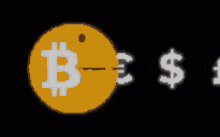Blockchain 2.0: Beyond Cryptocurrency

Blockchain 2.0 Explained
Blockchain 2.0 refers to the evolution of blockchain technology beyond its initial applications, mainly cryptocurrency like Bitcoin, to more sophisticated and diverse uses. Here’s a detailed breakdown:
Core Concepts of Blockchain 2.0:
-
Smart Contracts:
-
Definition: Smart contracts are self-executing contracts with the terms directly written into code. They automatically enforce and execute the terms of an agreement between buyers and sellers or any parties involved.
-
Platforms: Ethereum is the most notable platform for smart contracts, allowing developers to build decentralized applications (DApps) with complex logic.
-
-
Decentralized Applications (DApps):
-
Functionality: These applications run on a blockchain or P2P network of computers rather than a single computer, offering benefits like transparency, security, and resistance to downtime.
-
Examples: Beyond financial services, DApps can include voting systems, supply chain management, decentralized finance (DeFi), and more.
-
-
Interoperability:
-
Cross-Chain Communication: Blockchain 2.0 looks at how different blockchains can interact with each other. Projects like Polkadot and Cosmos aim to solve the interoperability problem by allowing different blockchains to communicate and share data.
-
-
Scalability Solutions:
-
Layer 2 Scaling: Technologies like Lightning Network for Bitcoin, or rollups for Ethereum (e.g., Optimism, Arbitrum), aim to increase transaction throughput, reduce costs, and speed up confirmation times without compromising on security or decentralization.
-
-
Enhanced Privacy and Security:
-
Zero-Knowledge Proofs: Protocols like Zcash use zero-knowledge proofs to allow transaction validation without revealing the details of the transaction.
-
Confidential Transactions: Techniques to hide the amount of a transaction on the blockchain.
-
-
Governance Mechanisms:
-
Decentralized Autonomous Organizations (DAOs): These are organizations represented by rules encoded as a computer program that is transparent, controlled by the organization members, and not influenced by a central government.
-
-
Tokenization:
-
Beyond Cryptocurrency: Tokenization of assets (real estate, art, intellectual property) on blockchains, allowing for fractional ownership, liquidity, and global access.
-
Challenges and Considerations:
-
Regulatory Compliance: As blockchain applications move into more regulated sectors like finance, legal, and healthcare, they must navigate complex regulatory landscapes.
-
User Experience: Despite technological advancements, blockchain applications often struggle with user-friendliness, which is crucial for adoption.
-
Environmental Impact: The energy consumption of some consensus mechanisms like Proof of Work has led to criticisms and pushes towards more sustainable alternatives like Proof of Stake.
-
Security: With more complex smart contracts, the risk of vulnerabilities increases, leading to potential exploits if not audited properly.
Future Outlook:
Blockchain 2.0 is still in its growth phase, with ongoing developments in technology, legal frameworks, and business models. It promises a shift towards a more decentralized, transparent, and secure digital infrastructure, potentially revolutionizing how we handle data, contracts, and trust in digital environments.
This evolution from Blockchain 1.0 (purely cryptocurrency focused) to 2.0 (application-centric) is indicative of blockchain’s maturation, aiming for broader utility and integration into everyday life and business processes.
Blockchain 2.0 expands beyond cryptocurrencies to include:
-
Smart Contracts: Self-executing contracts on platforms like Ethereum.
-
DApps: Decentralized applications for various sectors.
-
Interoperability: Enabling different blockchains to communicate.
-
Scalability: Solutions like layer-2 technologies for better performance.
-
Privacy & Security: Advanced methods like zero-knowledge proofs.
-
Governance: DAOs for decentralized decision-making.
-
Tokenization: Representing assets as tokens for broader access.
It addresses challenges like regulation, user experience, environmental impact, and security, aiming for a more versatile blockchain ecosystem.




